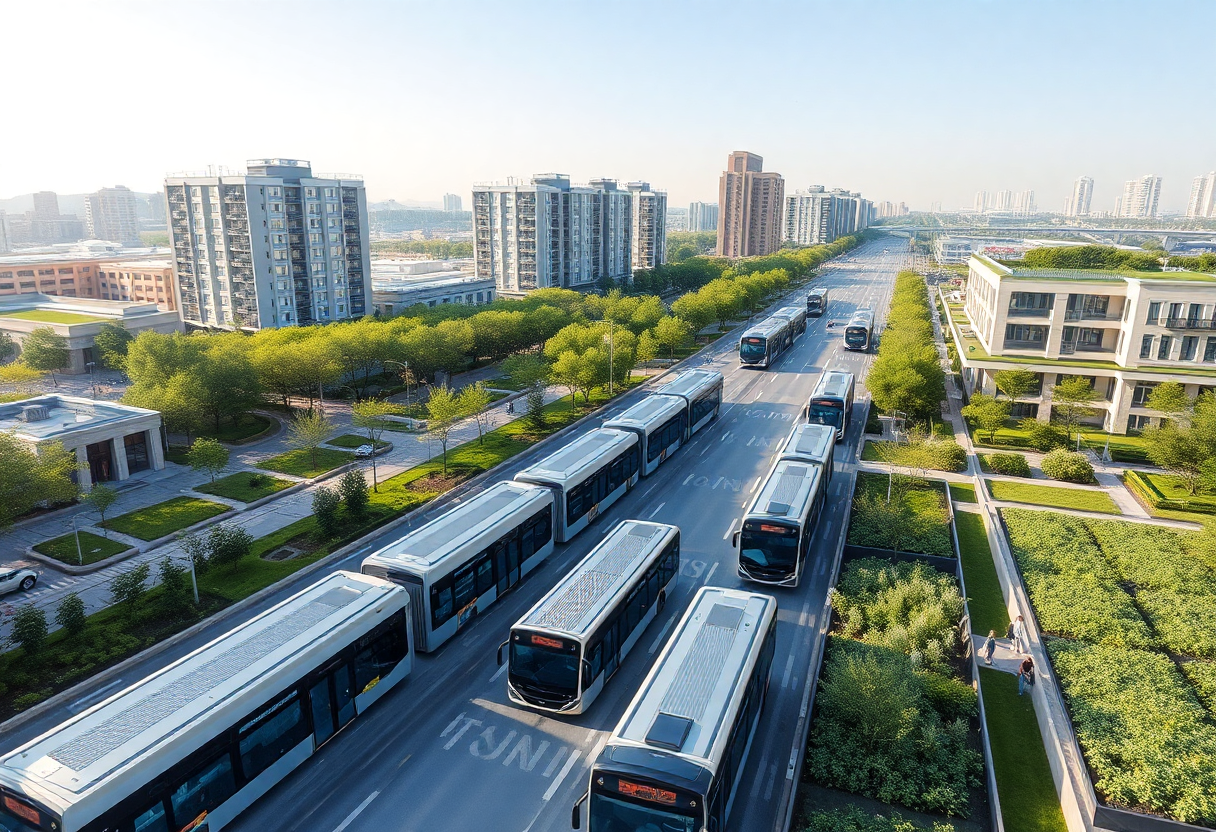

The Solutions Explorer lets you create alerts that match your needs. You can create several alerts and you will receive a notification each time a new Solar Impulse Efficient Solutions is labelled and matches your filters.
Your Search Alerts will show up here.
Sign in to create alerts for your filters and search terms.
Sign inDon't have an account?
Sign upAccess exclusive opportunities for Investor Members Only
The Investment Hub is a platform by the Solar Impulse Foundation that connects innovators with investors to fund scalable and sustainable solutions. Through tailored matchmaking, e-pitches, and a collaborative digital environment, it helps drive impactful innovation forward.
Sign in to explore a world of dynamic and high-potential investment opportunities.
Sign inDon't have an account?
Sign upAugust 22, 2024
Integrating sponge city infrastructure in Yanji
Yanji

Implemented a Bus Rapid Transit system integrated with advanced stormwater management and green infrastructure. This project applies sponge city principles, creating flood-resilient, mixed-use urban subcenters with public green spaces.
China’s Sponge City Program (SCP) represents a significant shift towards sustainable urban development in response to severe environmental challenges posed by rapid urbanization and climate change. This innovative program aims to transform urban water management by mimicking natural processes to absorb, store, and purify rainwater. By integrating natural blue (rivers, wetlands) and green (green roofs, rain gardens) spaces, sponge cities mitigate flood risks, improve water quality, and enhance urban resilience. The program's impact is substantial: as of 2019, it had invested around $60-90 million per city for initial projects, with total construction costs estimated at approximately EUR 1 trillion by 2030. These investments are expected to support a significant transformation, with an ambitious goal of equipping 80% of cities with sponge city infrastructure. The SCP not only addresses immediate flood and water management challenges but also contributes to increased urban biodiversity, cooler temperatures, and improved quality of life (3). Starting with pilot programs in 2015, the initiative has led to nearly 5,000 projects and the development of sponge city plans in 538 cities by 2018. This approach has inspired similar efforts in cities such as Berlin and Hamburg, emphasizing integrated flood management and water conservation. The Asian Development Bank has supported these projects, including the original pilot in Pingxiang (1). Germany's experience with green roofs and façades further illustrates the advantages of green infrastructure, with substantial progress in expanding green roof areas and setting a benchmark for other countries. By 2019, approximately two-thirds of German cities mandated green roofs in development plans, leading to a dramatic increase in green roof coverage to 120 million m² over the past decade (2).
Share
The information set out above, is solely for the purposes of information and the Solar Impulse Foundation does not provide any guarantee as to its authenticity, completeness or accuracy. This information does not constitute investment advice or a recommendation to buy into, transact or to enter into any agreement with any of the parties or persons mentioned above. Potential investors or interested parties are solely responsible for their investment or business decisions and for performing any due diligence required by the circumstances. The innovator has asserted ownership of the intellectual property rights for images, videos, and content showcased above, affirming full and unrestricted usage rights, and has provided explicit permission for the Solar Impulse Foundation to publish such information designated as "public" in the application form.